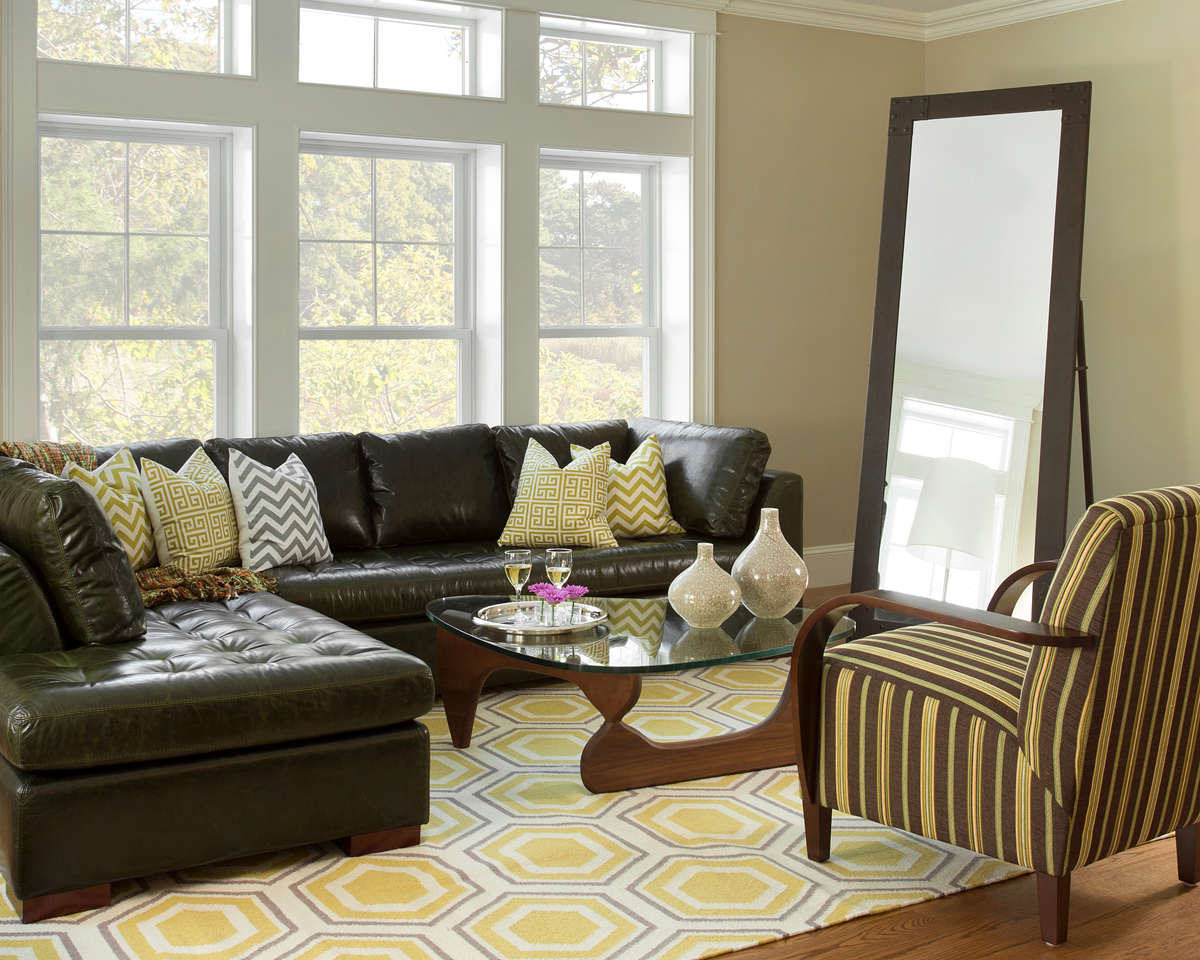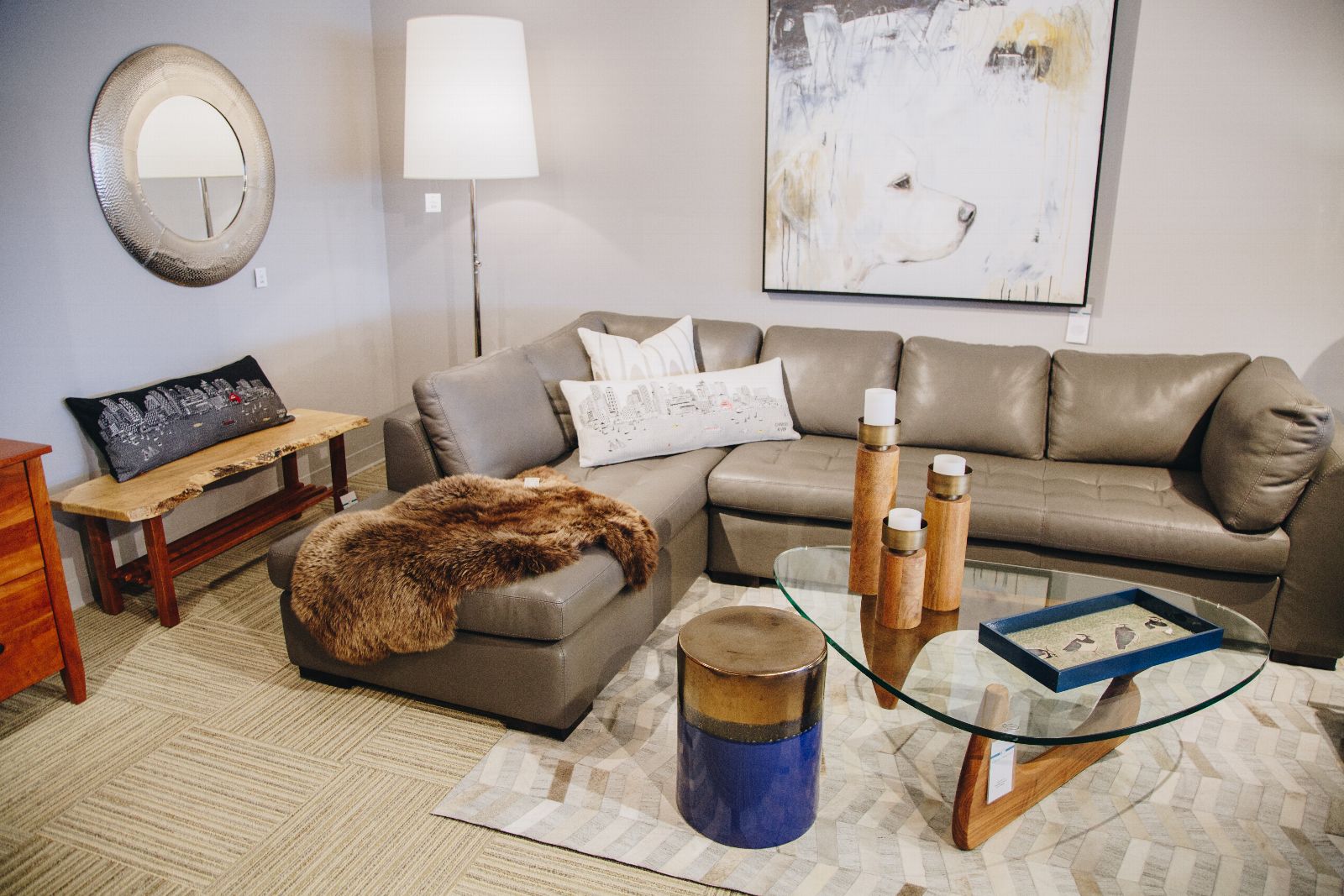Blog
3 Ways to Use Mirrors in Your Home
The reflective surface of a mirror thoughtfully placed can serve many purposes, and here we’ll look at 3 ways to use mirrors in your home.
We drew on the design expertise of Linda Maguire, the manager of the Circle Furniture Boston location, to home in on these effective, easy to implement ideas.
Quality and Types of Mirrors

Mirrors come in various sizes and styles. Of the common styles, there are freestanding mirrors, often full-length; hand mirrors; framed wall mirrors; mounted or unframed mirrors; and over-the-door hanging mirrors.
Quality mirrors offer a true-to-life reflection. To check for quality in a mirror, then, see that it has a clean, uniform surface that doesn’t distort the reflection. It should be perfectly flat, for the same reason. Good mirrors have a thick coating of the silvery backing that transforms the glass into a mirror.
The glass of high-quality mirrors is also thick. Because of this, they can be quite heavy. Consider this weight when thinking through how big you want your mirror to be and where you want to hang it.
Choose from new mirrors or antique mirrors. The latter offer a touch of patina style, though this may reduce its functional capacity.
The character of older mirrors is usually the result of the silvering on the back becoming worn; but it’s also the silvering that makes it reflective. So what you gain in character, you lose in functionality.
The type of mirror you choose will be greatly determine by how you use it.

Mirror Use 1: Check Yourself
Your mirror can simply serve the function we most often associate it with: use mirrors to check your appearance. As such, face mirrors, large and small—mounted, handheld, and freestanding—work well in your bathroom.
A set-up that allows you to reflect one mirror into another provides you a way to see what you look like from the back. So here, a hand mirror and a wall-mounted mirror are helpful.
Full-length mirrors are useful in the bedroom or walk-in closet to assess your overall look.
A mirror strategically placed by your front door provides the opportunity to check yourself one last time before you go out in public.
For functional mirrors, lighting is important. The more natural light you have, or light that simulates the environment you’re preparing for, the better. How you look under a dim incandescent bulb will be quite different than, say, how you’ll look in bright sunshine.

Mirror Use 2: Reflect Light
Mirrors serve a dual function with light: the mirror image itself is bright when reflecting light, and mirror surfaces can bounce that light into surrounding spaces.
Think of light like a ball, and the light source is where you’re throwing the ball from. Now imagine tossing your light ball in a perfectly straight line toward your mirror surface from that source.
Think through how that ball will bounce and how that bounce can change depending on the placement and angle of your mirror. This is how you can maneuver the light in your space with your mirror.
Use reflected light to brighten a dark space. Reflected light, and brightness in general, make any room appear larger. Reflecting a window with a nice view is a way of bringing the brightness of the outdoors inside.
Mirror Use 3: An Artful Addition
Mirrors are excellent decorative items. This is where antique mirrors figure nicely. Put a small mirror in an ornate or otherwise showy frame; include it with an arrangement of photos or artwork, or use it as a singular piece of artful decoration.
Use a large mirror above a mantle or other focal point of a room. Mirrors draw people’s attention and will help highlight choice elements of your home. Mirrors also create movement because they reflect whatever motion is happening. They make a room more dynamic.
Mirrors also make your home bigger in appearance, which can be especially welcoming in a small home. Large mirrors that reflect big window views or other open spaces are particularly effective in this capacity.
Where Not to Use Mirrors

We love mirrors, and they can be powerful additions to your home; just make sure you’re using those powers for good. When you install a mirror, be mindful of everything it reflects, or everything it can reflect.
Live with it for a few days, checking it often to make sure it’s not capturing visions you don’t want to see. Is it accidentally peering into a private space? Is it reflecting something unsightly? At certain times of day, is your reflecting a light or the sun and blinding people in the space?
Feng shui principals set down specific guidelines about how and where not to use mirrors. Whether or not you want to feng shui your entire house, the rules of that philosophy may spark ideas and help you recognize an unwanted consequence of where you’ve placed a mirror.
Do You Have Your Own Design Questions? We’re Here for You
Do you have more questions about mirrors? Or other design or décor inquiries? We are here to help. You can always make an appointment with one of our design consultants at any of our six Massachusetts locations.
Please peruse our newly redesigned website, which is full of information and design tools made to help you in your home decorating process, whether you’re doing a complete redesign or replacing a single item.
We also have a YouTube channel, and there you’ll find design help on a number of topics. You can also learn about the members of the Circle Furniture team. We’re a family owned business with over sixty years of experience, and we’re happy to share that knowledge with you.
Author: Guest Author


